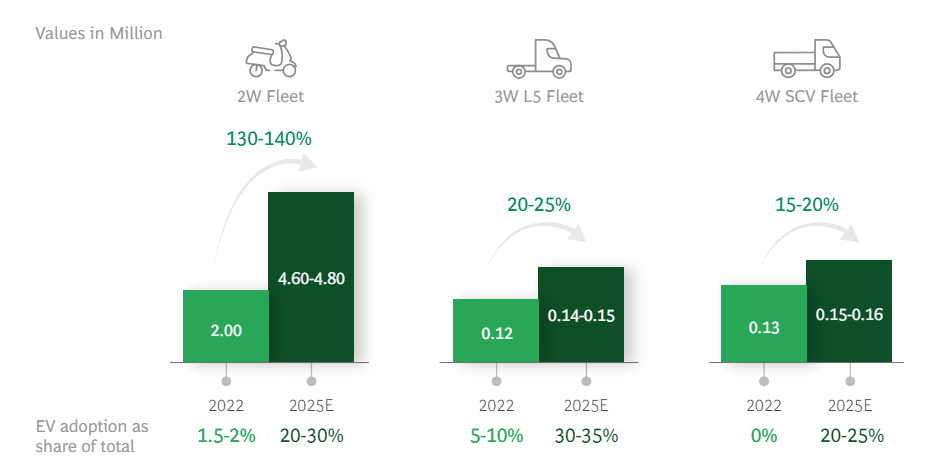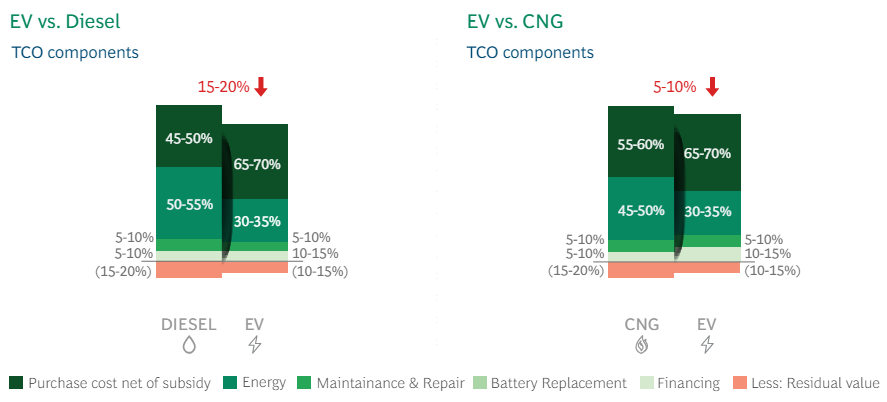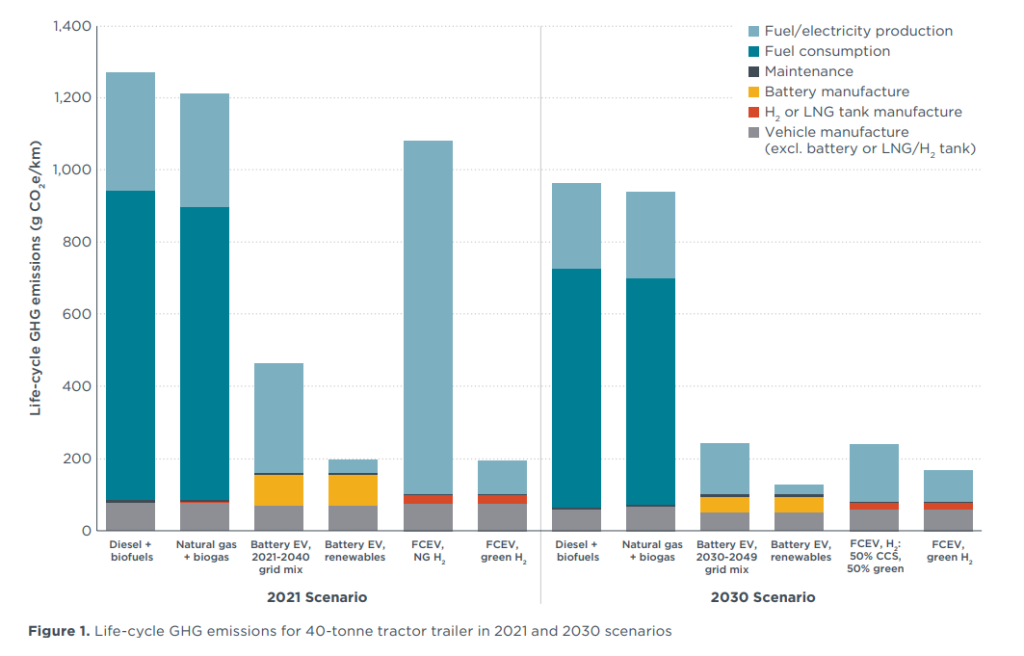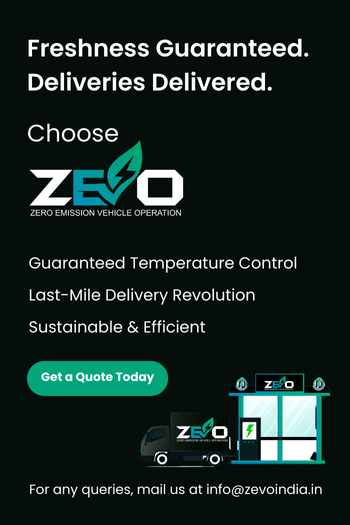Streamline Your Supply Chain: Optimizing Logistics with EVs

Akshay Sharma
CEO's Office @ZEVO
Did you know that companies can reduce their transportation costs by up to 30% by switching to electric vehicles (EVs)?

Rising fuel prices are squeezing profit margins, but EVs offer a sustainable and cost-effective solution for modern supply chains.
This guide explores how EV integration can revolutionize your logistics network, slashing costs, minimizing environmental impact, and boosting efficiency.
Table of Contents:
- Cost Savings & Sustainability with EVs
- EV-as-a-Service (EaaS): Benefits & Considerations
- Maximizing EVs: Range, Maintenance, Integration
- EVs for Every Route: Last-Mile, Long-Distance, & Beyond
- The Future of Green Supply Chains
- Get Started with EVs!
The Benefits of EV Integration in Logistics:
Fuel costs are a major expense in traditional logistics. EVs eliminate dependence on volatile fuel prices, with electricity offering significant cost savings. Studies show that companies can achieve a 30% reduction in transportation costs by transitioning to EVs.

Maintenance costs for EVs are typically lower compared to gasoline vehicles. EVs have fewer moving parts, resulting in less wear and tear, and potentially fewer service appointments.
Reduced Emissions:
Sustainability is a growing priority. EVs produce zero tailpipe emissions, significantly reducing your company’s carbon footprint and contributing to a cleaner environment. This aligns with stricter environmental regulations and helps achieve sustainability goals.

By adopting EVs, you can potentially benefit from government incentives or tax breaks offered to promote clean transportation solutions.
Improved Efficiency:
Strategic route optimization for EVs can maximize range and delivery efficiency. While considering range limitations, planning routes with strategically placed charging stops can ensure smooth operations.
Some EVs offer faster acceleration and regenerative braking, which can improve overall delivery times and potentially reduce energy consumption.
EV-as-a-Service (EaaS) for Streamlined Logistics:
EV-as-a-Service (EaaS) offers a subscription-based model for EV fleets. This eliminates the upfront costs of purchasing EVs, making them more accessible for businesses of all sizes. Here’s how EaaS benefits your supply chain:
- Reduced Upfront Costs: EaaS eliminates the high initial investment of purchasing electric vehicles. You pay a predictable monthly fee, making budgeting easier.
- Flexibility and Scalability: EaaS offers flexibility to scale your fleet up or down based on demand. You can easily adjust the number of vehicles without long-term financial commitments.
Here are some potential concerns with EaaS to consider:
- Charging Infrastructure: Ensuring adequate charging infrastructure is crucial for successful EV implementation. EaaS providers might offer solutions, but building your own infrastructure might be necessary.
- Battery Replacement Costs: Battery replacement costs can be a factor. However, EaaS providers often handle battery maintenance and replacement within the subscription fee.
A Total Cost of Ownership (TCO) comparison between EVs with EaaS and traditional gasoline vehicles will provide a clearer picture of long-term financial implications.
Addressing Challenges and Considerations:
EV Range and Infrastructure:
While range limitations exist for EVs compared to traditional vehicles, route optimization strategies can maximize their effectiveness. Optimizing delivery routes and strategically placing charging stations are key considerations.
The future of EV infrastructure is promising. Explore alternative charging solutions like solar-powered charging stations or battery swapping technologies that might emerge in the coming years.
EV Maintenance and Uptime:
EVs generally require less maintenance than traditional gasoline vehicles due to fewer moving parts. This translates to less downtime and potentially lower overall maintenance costs.
Integration with Existing Systems:
Modern EVs integrate seamlessly with existing fleet management software and logistics platforms. This ensures smooth data flow and efficient management of your EV fleet within your current operation.
The Impact on Different Logistics Segments:
Last-Mile Delivery:
EVs are perfectly suited for last-mile delivery in urban areas. Their shorter range aligns well with typical last-mile delivery distances, and zero emissions contribute to cleaner air quality in city centers.
Long-Distance Transportation:
Long-Distance routes currently pose a challenge due to EV range limitations. However, strategic planning with charging stops can be a solution. Additionally, advancements in battery technology are expected to address range limitations in the near future.
Cold Chain Logistics:
While temperature-controlled EV solutions are still under development, the future looks promising. As battery technology advances, expect to see more viable options for cold chain logistics with EVs.
Conclusion:
Optimizing logistics with EVs offers a multitude of benefits for your supply chain. Significant cost savings on fuel and potentially lower maintenance translate to increased profitability. Reduced emissions contribute to a cleaner environment and position your company as a sustainability leader. Additionally, EVs can potentially improve efficiency with strategic route optimization.
By embracing EV technology, you can future-proof your operations and gain a competitive edge.
Ready to unlock the potential of EVs in your supply chain? Contact us for a deeper dive into EV integration strategies, or visit us for a consultation on implementing EVs in your fleet.

Share this Article
Subscribe to our newsletter
Be the first to receive exclusive offers and the latest news on our products and services directly in your inbox.
